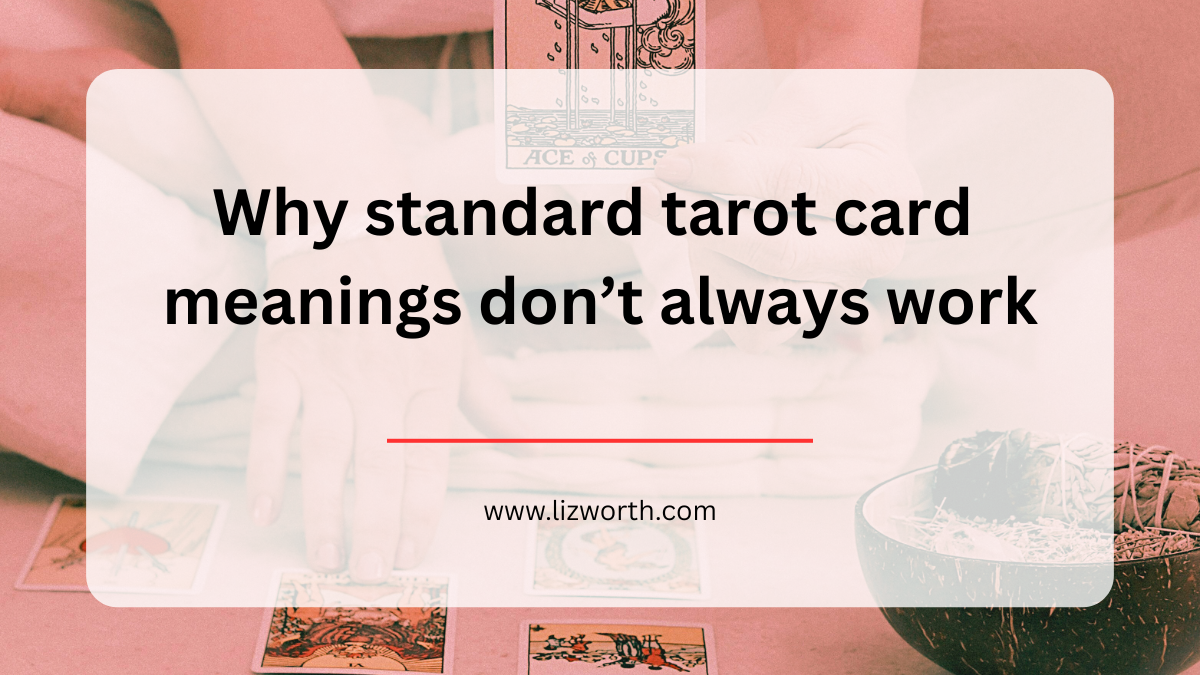Why standard tarot card meanings don’t always work

There's no shortage of resources out there offering tarot card meanings. So why is it so hard to figure out what a card means?
“What does this card mean?”
If you read tarot, chances are you’ve asked this question more than once along your path.
But one thing I’ve started to discourage tarot students from asking is that very question:
“What does this card mean?”
Why?
Because if figuring out a card meaning was the only thing standing between you and your tarot reading, you wouldn’t even have to ask that question.
Card meanings are everywhere. You can Google any tarot card and come up with all kinds of answers.
Or you can get a guidebook and look it up.
Or you can watch any number of videos on social media where people talk about their understandings of various tarot cards.
When someone asks what a card means, the problem isn’t that they can’t find that out on their own. Quite often, students who ask this question have already done their own studying. They already know something about the card they’re wondering about.
The problem is that the card meanings they’ve already studied don’t feel right, or adequate, because they are just meanings – not interpretations.
Yet so many tarot readings are taught early on that tarot readings revolve around card meanings alone.
What people are usually trying to do when they ask “what does this card mean” is they are wondering how to actually read that card.
Tarot card meanings are not the same as tarot readings.
That’s something I’ve been working to distinguish a lot this year.
If you’re always asking, “What does this card mean?” and you never feel like you’re hitting on an answer that works, try asking a different question:
“What does this card mean when I put in a certain context, such as self-care, or creativity?”
“What do I need to consider in relation to the spread position?”
“What am I seeing when I look at the card that will give me clues about how to interpret it in this reading?”
The questions you’re asking, the card combinations you’re working with, and the spreads you’re reading on will all influence the interpretation you come to. And sometimes a standard card meaning won’t feel fluid enough, or big enough, or accurate enough on its own to work within a specific context.
“How can I interpret this card in this specific reading?” is a question that I encourage you to ask next time you’re wondering, “What does this card mean?”
This is why I don’t teach long-winded explanations of each tarot card in my courses. Even my Tarot Foundations program, which teaches you about all 78 tarot cards, takes a different approach:
As you learn how to work with each card, you will also learn how to take into account the history behind the cards, their imagery, patterns, and symbolism so that you can start to use tarot as a visual language that builds interpretations, rather than as a static set of cards that have a list of generic meanings.
I don’t want your tarot studies to be based on memorizing meanings. I want you to learn how to actually read your cards.
When you’re able to literally read your cards for what they’re showing you, you don’t have to ask, “What does this card mean?” anymore. You can begin to build your own interpretations as you create new connections with the cards that feel more intuitive, fluid, and personal to each reading.
Until next time,
Liz
Categories: : tarot card meanings, tarot for beginners
 Liz Worth
Liz Worth 